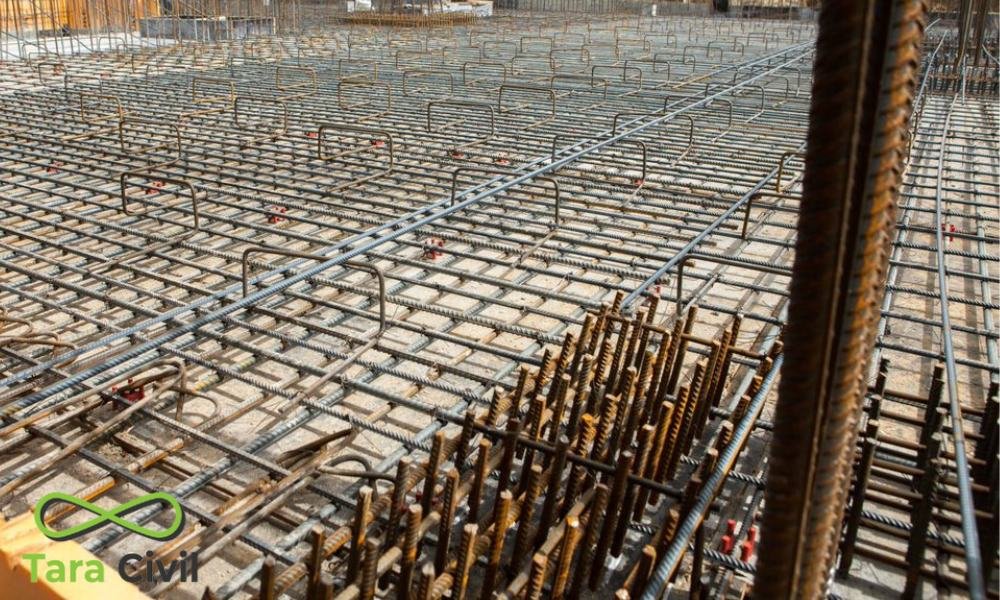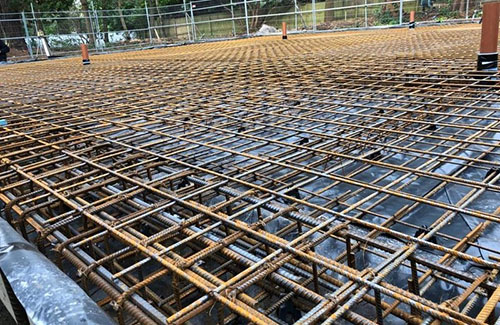How Steel Fixing Melbourne Experts Ensure Strong and Durable Structures
How Steel Fixing Melbourne Experts Ensure Strong and Durable Structures
Blog Article
Mastering Steel Mending: Strategies for Superior Building And Construction
Mastering steel fixing is a fundamental facet of building and construction that straight affects the security and durability of concrete frameworks. By understanding the details of exact positioning, the suitable usage of tools, and usual pitfalls to stay clear of, professionals can considerably enhance overall project outcomes. Adhering to finest safety methods not only safeguards employees however additionally contributes to the honesty of the structure itself. As we explore these strategies in better detail, the effects of understanding this important skill become progressively noticeable, raising inquiries concerning just how these methods can change building and construction methods.
Understanding Steel Correcting Essentials
Steel dealing with, a vital element in the construction industry, includes the placement and safeguarding of steel support bars (rebar) within concrete frameworks. This procedure is critical for making sure the structural honesty and sturdiness of concrete elements, as rebar considerably improves tensile strength, which concrete lacks.
Comprehending the essentials of steel repairing starts with acknowledging the various kinds of rebar and their specifications, including diameter, grade, and coating. Rebar is commonly made from carbon steel and is readily available in various dimensions, which are selected based on the architectural requirements of the job.

Moreover, the use of appropriate washing lengths and anchorage techniques contributes to the general security of the concrete framework. It is essential for steel fixers to comply with safety criteria and best techniques throughout the installation process, ensuring not just the success of the job but also the security of all workers entailed.
Necessary Devices and Tools
Effective steel repairing depends heavily on the right devices and devices to guarantee accuracy and efficiency in the setup procedure. Trick devices include rebar cutters, which are important for making specific cuts in various sizes of steel bars, and rebar benders that give the necessary angles for appropriate placement. Furthermore, a great top quality collection of pliers, specifically tie wire pliers, is essential for securing rebar with tie cable.
Determining devices, such as tape measures and laser levels, promote accurate format and placement, while a durable selection of vises and clamps aids in holding the rebar in position during setting up. Safety and security tools, including handwear covers and goggles, can not be forgotten, as they shield employees from potential risks related to steel handling.
For larger tasks, spending in mechanical devices like rebar linking equipments can substantially improve performance. Correct storage space services, such as shelfs or containers, assistance arrange materials and preserve a safe working setting - steel fixing. By using these necessary devices and equipment, steel fixers can improve their workflow, guaranteeing that structural integrity and building timelines are consulted with precision
Strategies for Accurate Placement

One reliable technique is using themes or noting guides to establish precise areas for steel bars. These overviews should be made from sturdy materials to hold up against the roughness of construction and must be checked versus architectural illustrations to validate precision. Furthermore, employing laser levels can significantly boost positioning and altitude precision.
In addition, maintaining appropriate spacing between supports is essential. This can be achieved by using spacers or chairs that are designed about his to hold steel bars in position at the called for distance from the formwork.
Routine evaluations during placement must be carried out to make certain compliance with task specs. Any type of inconsistencies have to be dealt with immediately to stop architectural weak points.
Lastly, partnership with various other trades is vital, as clear communication can protect against positioning errors that may develop from contrasting building activities. By carrying out these techniques, steel fixers can considerably add to the total quality and safety of the construction task.
Common Errors to Avoid
While making certain the right positioning of reinforcement steel is crucial, numerous common errors can threaten the integrity of the construction procedure. One constant error is inadequate spacing in between steel bars. Insufficient spacing can bring about blockage, which can compromise concrete flow and bonding, ultimately influencing architectural strength.
Another typical mistake entails overlooking to correctly safeguard the reinforcement bars throughout positioning. Failure to appropriately sustain the steel or tie can cause imbalance, specifically when concrete is put, causing architectural weak points. Additionally, ignoring the required cover thickness frequently results in premature rust of the steel, diminishing the durability of the framework.
Improper cutting and flexing of rebar is one more risk that can lead to stress and compression problems within the concrete. It is necessary to adhere to specific specifications to preserve the designated load-bearing capability.
Lastly, poor examination prior to concrete putting can permit these mistakes to go undetected. Normal checks and adherence to make specs are vital to make certain that steel fixing is done correctly. By staying clear of these typical blunders, building experts can improve the sturdiness and safety of their projects, guaranteeing a successful result.
Best Practices for Safety And Security
Making sure the stability of steel fixing is not just concerning staying clear of common errors but also about carrying out finest techniques for safety and security on the building site. A comprehensive safety and security plan need to start with correct training and positioning for all workers entailed in steel taking care of. Employees must know with safety protocols, tools use, and emergency situation treatments to mitigate dangers properly.

Keeping a tidy and orderly workplace is just as vital. Clear paths and correct storage of products can dramatically reduce trip and loss hazards. Additionally, executing robust interaction procedures, such as hand signals or radios, can stop mishaps created by miscommunication.
Last but not least, fostering a society of security among employee urges vigilance and liability. click this Routine safety and security meetings and open discussions concerning possible hazards will certainly advertise proactive steps and boost overall safety and security on the construction site. By sticking to these ideal methods, the danger of accidents throughout steel fixing projects can be considerably reduced.
Verdict
Grasping steel taking care of is crucial for guaranteeing the structural stability and toughness of concrete buildings. By employing exact strategies, utilizing proper devices, and sticking to finest techniques, the top quality of construction can be substantially boosted. Awareness of typical blunders and a strong commitment to safety better add to forecast success. Ultimately, the execution of these strategies fosters a reliable and effective workplace, resulting in superior results in building jobs.
Grasping steel repairing is a basic facet of building that directly affects the security and long life of concrete frameworks. By making use of these crucial tools and devices, steel fixers can improve their process, guaranteeing that architectural honesty and building and construction timelines are met with accuracy.
While ensuring the right placement of support steel is crucial, numerous typical errors can weaken the stability of the construction procedure.Guaranteeing the integrity of steel repairing is not only about staying clear of usual errors but also concerning applying finest techniques for safety original site and security on the construction site.Understanding steel repairing is essential for making sure the structural integrity and durability of concrete buildings.
Report this page